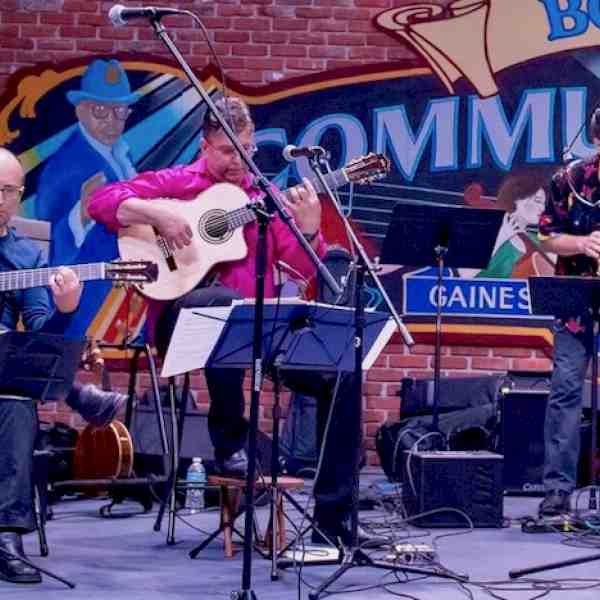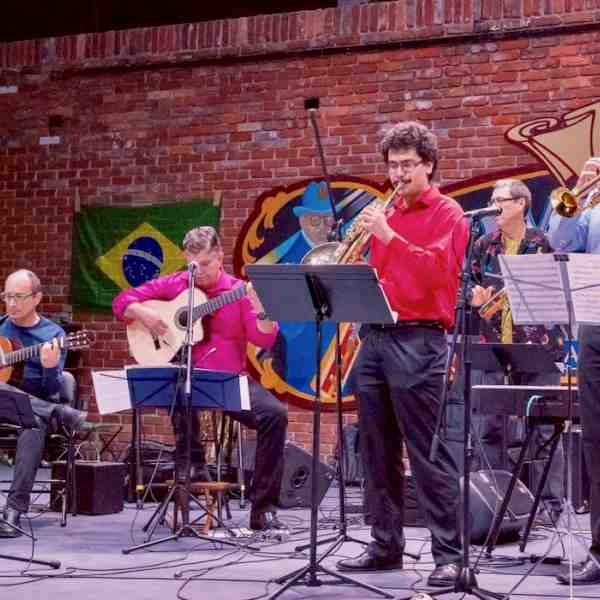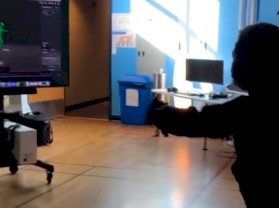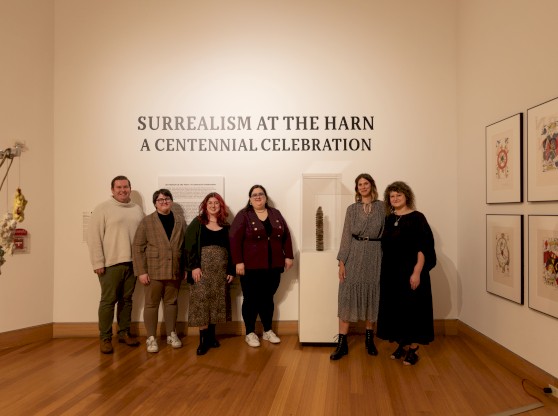Directed by Associate Professor Welson Tremura, Jacaré Choro (pronounced: “ʒakaɾɛ ˈʃoɾu” – meaning ‘gator lament’) is a University of Florida’s School of Music Brazilian instrumental ensemble dedicated to Brazil’s rich musical heritage. Our Jacaré Choro combines plucked strings (guitar and cavaquinho), winds (flute, French horn, saxophone, and trumpet), piano and percussion (pandeiro). For this year’s performance at the Bo Diddley Plaza in downtown’s Gainesville on the 21st of October the ensemble collaborated with following participants: Ulisses Rocha and Welson Tremura on guitar; Charles Perrone on cavaquinho (akin to the ukulele; soprano guitar); Larry Crook on pandeiro (Brazilian tambourine); Kevin Orr and Rodrigo Tremura on piano; Emily Theobald on flute; Salvador Hernandez on French horn; Randy Lee on trumpet; and Vadim Arsky on soprano and tenor saxophone.
Historians of Brazilian music generally agree that the first choro ensembles appeared in Rio de Janeiro’s working class neighborhoods around the year of 1870. These ensembles were small, and almost always included flute as the melodic instrument, a cavaquinho to provide rhythmic and harmonic support, and a guitar to provide counter-melodies, harmony, and the bass lines (baixaria). Choro, was also early referred to a gathering of musicians, and only later came to describe a musical genre. It was the music of virtuosi playing and Brazilian creativity with a high dosage of competency and talent.
Furthermore, choro uses the ballroom dance forms imported from Europe such as polkas, mazurkas, schottisches, quadrilles, and waltzes added to popular Brazilian musical genres such as maxixes, lundus and modinhas to create and transform this into genuine Brazilian music. Led by a genuine and dynamic rhythmic drive by the pandeiro and cavaquinho, choro uses the subdivision of the common binary meter into a continuous stream of sixteenth notes distributed among three fundamental parts: embellished and varied melody, syncopated accompaniment rhythms, and a polyphonic texture created by the voice-leading of the accompaniment and contrapuntal bass melodies.
Additionally, a good choro piece is structurally expected to contain three sections comprised of two to four measure phrases and maintaining a rondo format; the sections are generally related by use of the subdominant, dominant, and relative or parallel major or minor keys as contrasting tonal centers. Some of the important composers and practitioners of early choro were Chiquinha Gonzaga, Ernesto Nazareth, Anacleto de Medeiros, Joaquim Antônio Calado, Henrique de Mesquita, Irineu Batina, João Pernambuco, and the most celebrated, Alfredo da Rocha Vianna Filho, nicknamed “Pixinguinha”, among many others. Also, the twentieth-century Brazilian classical composer Heitor Villa-Lobos wrote his own set of choros, reflecting a nationalistic movement to establish art forms and styles characteristic of Brazil to bring popular art forms into the classical art circles.
A synonymous to overcrossing musical styles and placing emphasis in creativity, over the subsequent decades of the twentieth century choro further developed as an authentic instrumental, virtuosic genre, and the best players were expected to display improvisational skills. However, improvisations in choro are not of the type generally associated with American jazz, in which the soloist uses a stable harmonic form to generate new melodies. In choro music, the soloist usually added virtuosic embellishments or variations to the melody, and the musicians were responsible for creating counter melodies and the accompaniment to those improvised parts.
Learn more about the Jacaré Choro concert on November 7 and how to RSVP here.






